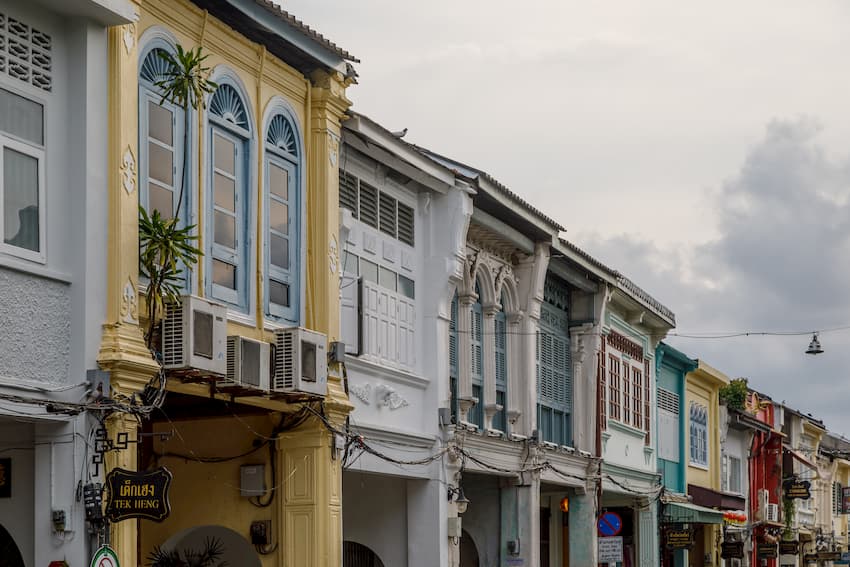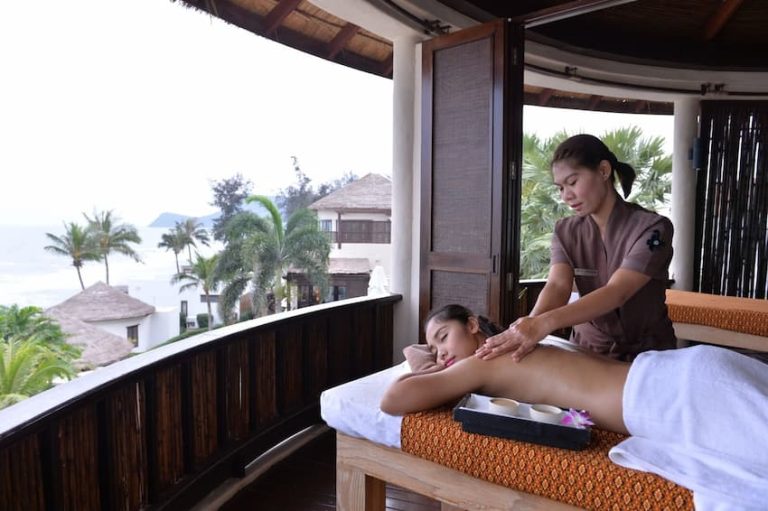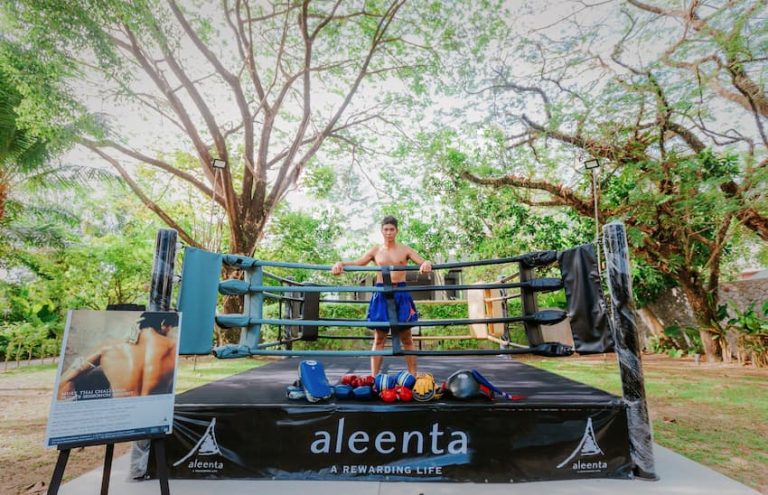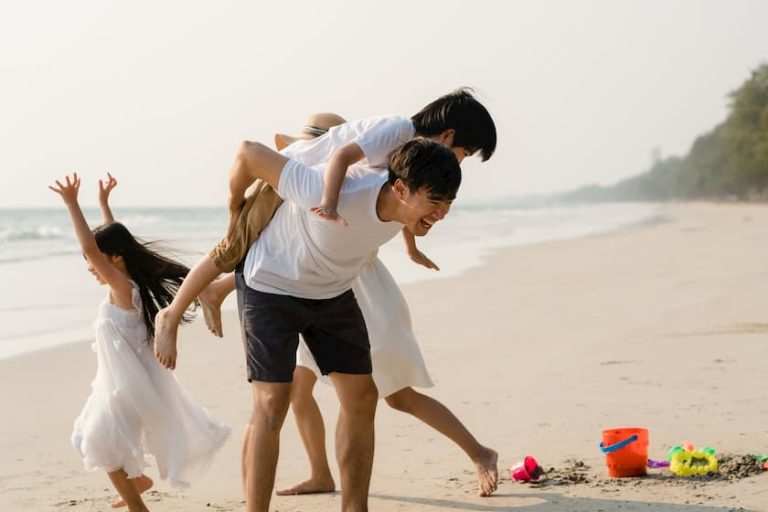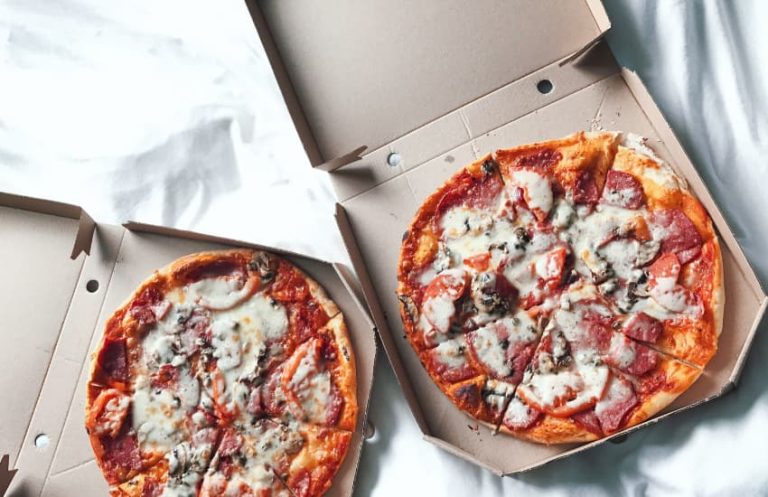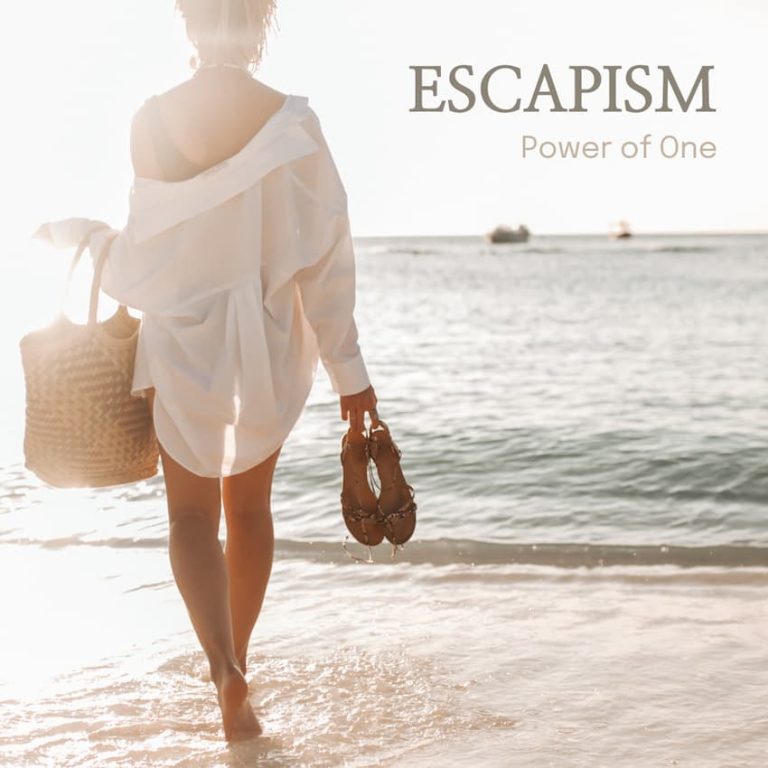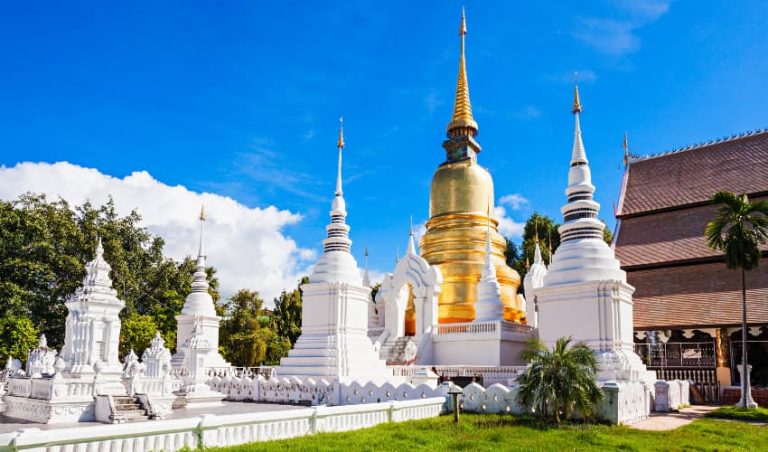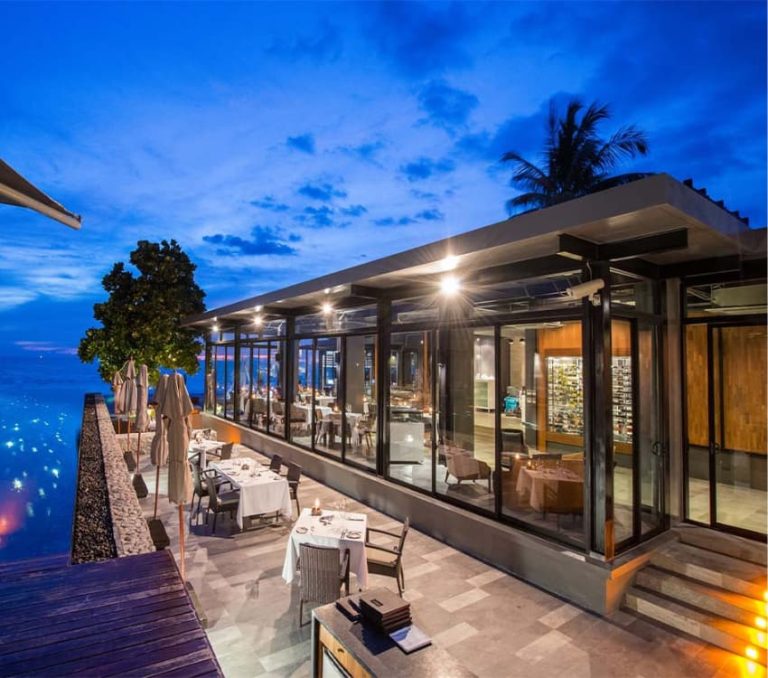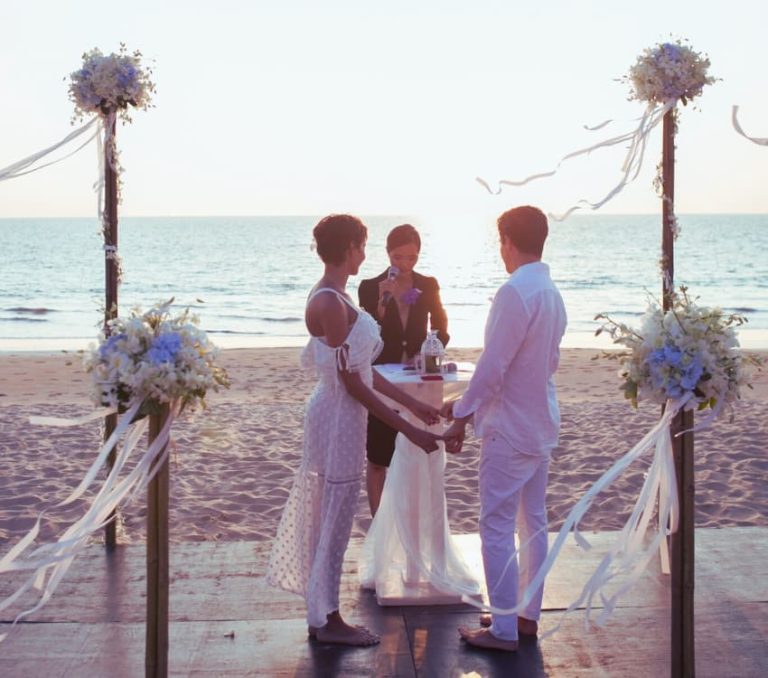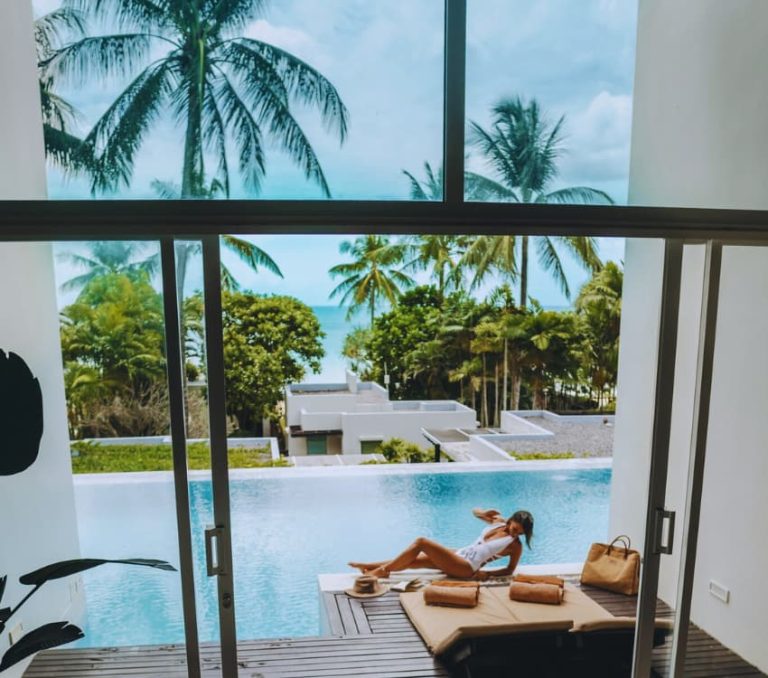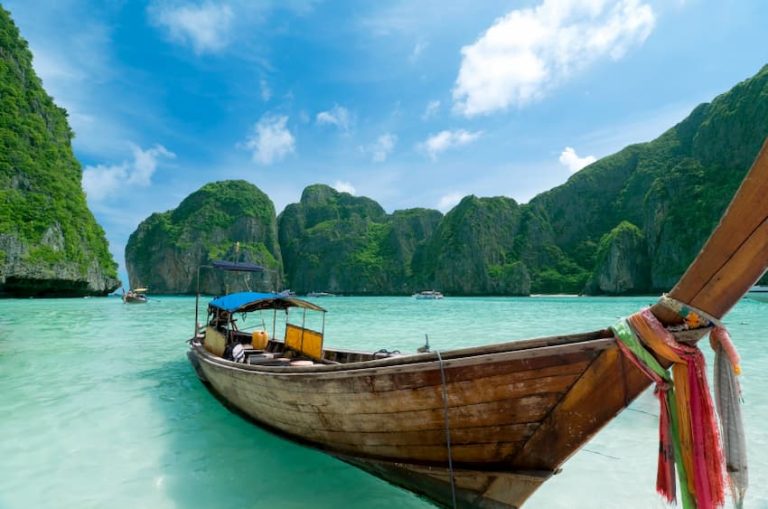Thailand’s largest island, Phuket, is one of the best holiday destinations in the country. There is much more to Phuket than sun and sand, however, and visitors who love to explore and immerse themselves in local culture will want to make sure to carve out time to explore this growing and thriving area – especially Phukets Old Town which stands out because of its history, culture, and architectural offerings.
Old Town Phuket
Architecture and Gardens
Old Town Phuket’s origins are as a tin-mining town that brought traders from around the world to the area to settle in hopes of making their fortune. This can be seen in the unique architecture you will experience as you make your way up and down this town’s very walk-able streets. Keep your eyes out for “shophouse” architecture that you will find recognisable from other Asian countries paired with colourful paint on the exterior walls for a visual experience unlike any other. Soi Romanee in particular is a street where the buildings, which were once brothels and opium dens, are ornately decorated and known for their amazing photo opportunities.
In the downtown area, you can view a home that was built in complete juxtaposition to the Soi Romanee district. Phra Phitak Chyn Pracha Mansion is a mansion that sits on a sprawling and well-groomed property. It was originally owned by someone who was not from Phuket and thus known locally as an “angmor-lao” house, which means “red-haired” or “foreign”. Although you cannot go inside the mansion to poke around, a stop by to view the Eastern mansion construction style is a must.
To round out your tour of Old Town Phuket’s architecture, you will also want to make sure to visit the political buildings as well as the Thai Airways Office, which are built in the Sino-Portuguese style, but like the Phra Phitak Chyn Pracha Mansion are not open to the public.
Old Town Culture
If the town’s history as the center of the tin mining industry in the country is of significance or interested to you, make sure to top at the Memory at On On Hotel. The hotel originally opened in the 1920s and houses artefacts of the mining era – plus, it was featured in the movie The Beach starring Leonardo DiCaprio. The property even has a silk and textile shop on site where you can buy souvenirs that you will not find anywhere else.
Take a stroll over to the Suriyadate Fountain at the end of Rassada Road there is a traffic circle decorated with what appears to be a standard fountain. If you get a closer look, however, you will see that what is unique about this fountain is that the guns spouting water are powerful water cannons that blast top soil and rocks away when tin is being mined. This fountain is both visually appealing, useful, and a nod to local history.
Just down the street from the Suriyadate Fountain is the Thai Hua Museum. This museum was built in 1917 as the first Chinese language school on the island and now stands as a great spot to learn about local history. Just up the street from this spot is the small Chinpracha Mansion, a privately owned museum that can be toured by appointment and for a small free. The front of the building is worth checking out even if you do not want a tour of the inside because it is recognisable from several Hollywood films.
The Thavorn Hotel Museum is a fully operational hotel that is both reasonably affordable, ornate, and operates something of a museum out of the lobby. Here, you will find old pictures and newspaper clippings on the walls and vintage furniture that details the tin mining industry’s impact on the town. The memorabilia on the ground floor includes typewriters and antique toys that history buffs will find simply breathtaking.
Head over to Yaowarat Road, here stands Limpanon House, an expansive and abandoned mansion that you can stop in and explore if the gates happen to be open. While this is not officially a tourist attraction, many visitors find it hauntingly irresistible and there are plenty of rumours going around about what happens if you dare to visit after dark.
If you’re interested in the lifestyle half a century ago, Baan Chinpracha will be of interest to you. This mansion was constructed in the Sino-Colonial style and is known for its elegance and fine preservation. A tour of the property will show that the current owners have not changed much and you will really feel as though you have stepped back in time.
You can also view the over 700 stamp sets that exist at the Phuket Philatelic Museum, additionally, there are old telegraphs, phones, and parcel-weighing.
Temples in Old Town Phuket
Originally built in Soi Romanee, the Jui Tui Temple was relocated to Old Town Phuket after a fire destroyed the original building. This temple is one of the most respect spiritual centers to be found in the area, and features an altar to the Chinese Gods. Of note at this spot it the use of fortune sticks. Visitors are invited to shake a bamboo cup that holds a collection of what are known as fortune sticks. Do not try and be gentle when you shake the cup, because the goal is to get one of the sticks to fall to the ground. When one does hit the dirt, you are supposed to look at the number on the stick, then head over to the red cabinet which is filled with paper that is labeled to match the numbers on the sticks. Pick up the paper, read the inscription, and you will have discovered your fortune care of the revered fortune sticks.
Right next to Jui Tui is the oldest Chinese Taoist temple in Old Town Phuket, Pud Jow. The temple is over 200 years old, though it was remodelled about a century ago after a fire damaged the original structure.
Dating back to the late 19th century, the Shrine of Serene Light has only recently become popular among tourists after the widening of the road that leads to it made the building more accessible. It is known for its beautiful terracotta-tiled roof and traditional architecture as well as the lush and peaceful garden.
Restaurants in Old Town
The Blue Elephant Governor’s Mansion is a unique spot that serves as a cooking school where you can take a class or simply sample royal Thai cuisine made by other students.
If you just want a quick drink in an eclectic environment, try White Chalk. This little cafe has refreshing sodas and homemade drinks in a small space filled up with teddy bears.
Although they are the only named restaurants, they certainly are not the only places to get a bite to eat as you explore Old Town Phuket. Practically every other storefront has something to offer to keep your thirst and hunger at bay.
Shopping in Old Town
You won’t want to leave Old Town Phuket without first stopping to pick up a few souvenirs.
One of the top spots for a bit of shopping here is Phuket City Market, which features an open-air market that allows you to buy locally harvested foods and handmade crafts. If sweets are more your thing, Lor Rong Market may be a better shopping spot for you to try.
Larger purchases can be made at China Inn, which sells vintage furniture and has a cafe in the front. Even if you don’t buy anything, the space is beautiful, featuring Chinese fabrics and lacquer work.
Comprised of 20 or so small shops, the Phuket Amulet Centre consists of vendors who create amulets and statuettes of Buddha. These pieces are all highly revered, and those in the know spend hours trying to carefully select the perfect amulet for them.
For dried herbs for healing and health then a stop at Nguan Choon Tong will allow you to sample these offerings yourself.
Along Thalang Road is where you’ll be able to find more standard western-style offerings. For example, there is a PN Sports that sells athletic gear and equipment as well as instruments. There are also a few tailors who have set up shop on this road, and you can purchase a locally-made suit or dress in this area.
Related Articles
- Explore Old Phuket Town
- Best Beaches in Phuket
- Guide to Shopping Phuket’s Local Markets
- Songkran Festival Phuket
- Phuket Vegetarian Festival
Aleenta Phuket
Phang Nga Resort & Spa
Phang Nga Resort & Spa
33 Moo 5, Khok Kloi,
Takua Thung, Phang Nga
82140 Thailand
T: +66 (0) 76 580 333

